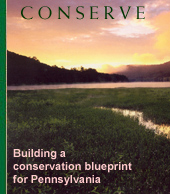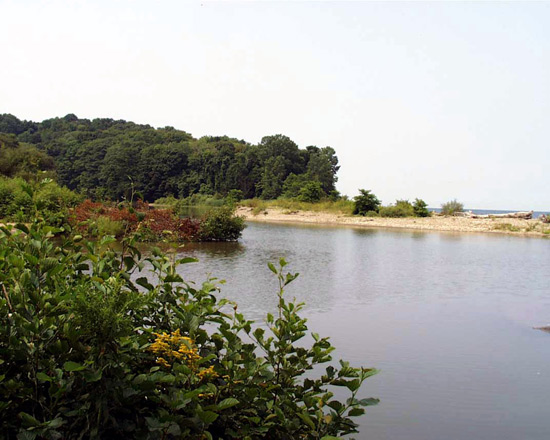Key Features
• Lake Erie shoreline includes high sand and clay soil bluffs with remnant forests and unique wetland types
• Presque Isle peninsula and bay are unusual Lake Erie features and harbor rare habitats and species
• Northward flowing lake tributaries are aquatic ecosystems unlike those elsewhere in the state, and Conneaut Creek is the most significant (lowest reach and mouth in Ohio)
Conservation Targets
• Six occurrences of important ecosystems: bluff face seepages, marshes, swamps, beaches and sandplains
• Seven occurrences of globally ranked plants and vertebrates including the eastern sand darter and lake sturgeon
• Three Biological Diversity Areas totaling 10,500 acres, harboring species and ecosystems above
• Two forest blocks, totaling 34,000 acres
• One focus watershed (Conneaut Creek) including 65-mile aquatic ecosystem which is the most important tributary to Lake Erie in Pennsylvania
Partners
Pennsylvania Game Commission; Pennsylvania Department of Conservation and Natural Resources; Office of Conservation Science; DCNR Bureau of State Parks; Pennsylvania Sea Grant; Lake Erie Region Conservancy; Presque Isle Audubon Society; Cleveland Museum of Natural History; Mercyhurst College; The Conservation Fund; R.K. Mellon Foundation.
Great Lakes - Lake Erie Shoreline and Conneaut Creek Pennsylvania’s portion of the Great Lakes ecoregion begins with its 45-mile stretch of shoreline along Lake Erie. Many streams drain from adjacent Erie and Crawford counties, the Central Lowlands Province, into the lake. Lake Erie moderates the area’s climate, which produces specialty agriculture, like vineyards, which are found nowhere else in our region. This area is within the larger St. Lawrence River Basin.
|
|
|

